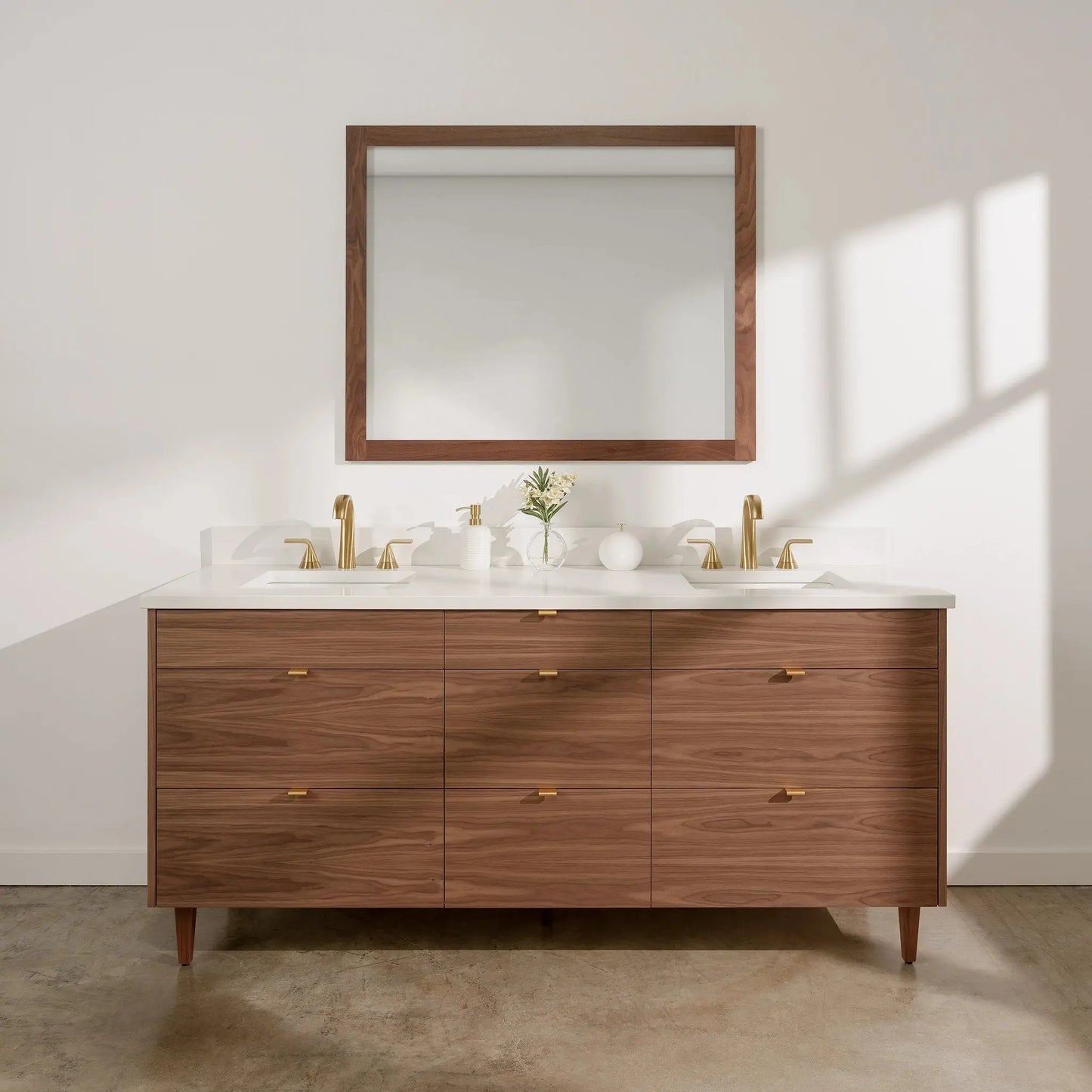COUNTERTOP STAIN REMOVAL
Natural stone is a porous material, which means liquids can occasionally seep into the stone, producing an unsightly stain or discolouration. The best method for maintaining your countertop is consistent care and attention. However sometimes an unforeseen circumstance forces us to take action to help revitalize that beautiful stone finish. The following is a guide to first identifying the type of stain and then using the necessary techniques and products to eliminate it.
PINPOINTING THE TYPE OF STAIN
The most important step for stain removal is knowing the type of stain. These primarily include organic, biological, oil based, ink, paint and acid based, as well as metallic. Surface stains of these types may simply be cleaned with the appropriate household cleaner, but for tougher stains here is a more in-depth breakdown.
ORGANIC: coffee, tea, wine, fruit, plant material, urine, food
12% hydrogen peroxide mixed with a small amount of ammonia.
BIOLOGICAL: mildew, algae, fungus
½ cup of bleach or hydrogen peroxide with a gallon of water.
OIL-BASED: grease, cosmetics, tar, oil-based products, milk
Oil based stains tend to darken the stone and must be chemically dissolved before being wiped away. Gently clean with a soft, liquid cleanser with bleach, mineral spirits or acetone.
INK-BASED: pen, ink, marker
Bleach or hydrogen peroxide for light colours, lacquer thinner or acetone for dark colours.
PAINT
Most modern paints are latex and acrylic based and will not cause staining. Soap and warm water with a soft cloth will rid you of this. However, oil based paints and caulks and sealants can leave oily stains for which a lacquer thinner may be needed to break down the product. When scraping off any sludge or curdled paint be sure to only use wood or plastic scrapers. Using a rougher tool can lead to etching of the stone possibly requiring a refinishing of the top. Always remember to use protective equipment when using chemicals such as gloves and eyewear. As well as being aware of any potentially harmful fumes. Be sure to have a properly ventilated area.
METAL: iron, copper, bronze, rust
Rusty stains are notoriously difficult to remove and doing so requires making a poultice (see poultice section) however depending on how set in the stain is, it may be damaged permanently.
WATER SPOTS & HARD WATER
Buff with dry #0000 steel wool
ETCH MARKS
Etch marks are caused by acidic materials that are left on the stone. Some will merely etch the finish while others will both etch and stain. Once you have removed the stain wet the surface with water and apply a marble polishing powder available at a hardware, lapidary or your local stone supplier store. Rub the powder on the stone using a damp cloth or a buffing pad with a low speed setting drill. Continue this until the etch mark is gone and the surface shines. In the event the problem remains, contact a professional stone restorer who will specialize in refinishing and re-polishing.
EFFORECENCE (White powder)
Efflorescence is a white powder that may appear as the result of water within the stone carrying minerals up throughout and then evaporating, leaving these powdery substances behind. If the installation is new, merely dust, mop or vacuum the powder. You may have to repeat this several times as the stone dries out.
NICKS & SCRATCHES
Small scratches may be buffed out using dry #0000 steel wool. However deeper nicks in the stone should be handled by your local professional.
POULTICES
A poultice is a liquid cleaner or chemical mixed with a white absorbent material to form a paste about the consistency of peanut butter. This concoction is then applied to the trouble area in a layer of about ½” high and extending past the stain about an inch on all sides. Again, the tool for the application of this should be of wood or plastic as to not harm the stone. Once applied, the poultice should be covered with plastic and secured with tape and be left for 24 hours. The poultice draws out the stain into the absorbent material as it dries. The process may have to be repeated for total removal.
APPLYING YOUR POULTICE
1) Spray the area with water.
2) Using a mixture of baking soda and water, or a pre-made product available online, smear the area with your mix so that it is at least ½” high and extends past the stain 1” on all sides.
3) Cover with plastic wrap and secure with tape.
4) Leave for 24 hours. The baking soda will dry and pull up the stain.
5) Remove the poultice and wash away any excess slurry with warm water and soap.
6) Apply a fresh poultice if required.
GENERAL CARE & MAINTENANCE OF NATURAL STONE
Understanding the geological properties of your stone top is key to discerning which cleaning agents are useful or harmful to your stone. Natural stone is characterized into three basic classifications; sedimentary, metamorphic and igneous. Of these classifications, they are further broken down into two categories of calcareous and siliceous.
CALCAREOUS STONES: marble, limestone, travertine and onyx
Calcareous stones are comprised of a high density of calcium carbonate and are very sensitive to acids and acidic based chemicals and cleaning agents. Be sure to use cleaning products that are non-acidic.
SILICEOUS STONES: granite, slate, quartzite, sandstone, brownstone and bluestone
Siliceous stones are comprised mainly of silica and quartz-like particles which are very durable and more resistant to acids. However, acid based cleaning products are still not recommended as trace particles can still be susceptible to damage.
SIMPLE TIPS
- Coasters for any kind of drink is extremely effective at mitigating water rings or any damage that may occur due to prolonged heat.
- In the event of a spill, blot with paper towel, flush the affected area with water and soap, then rinse and dry the area with a soft cloth.
- Avoid products containing lemon or vinegar as they can dull or etch calcareous stones
- Avoid products containing even trace amounts of HF (hydrofluoric acid) as this chemical breaks down silicates.
- As always, do not mix ammonia and bleach as they combine to form a toxic and lethal gas.

